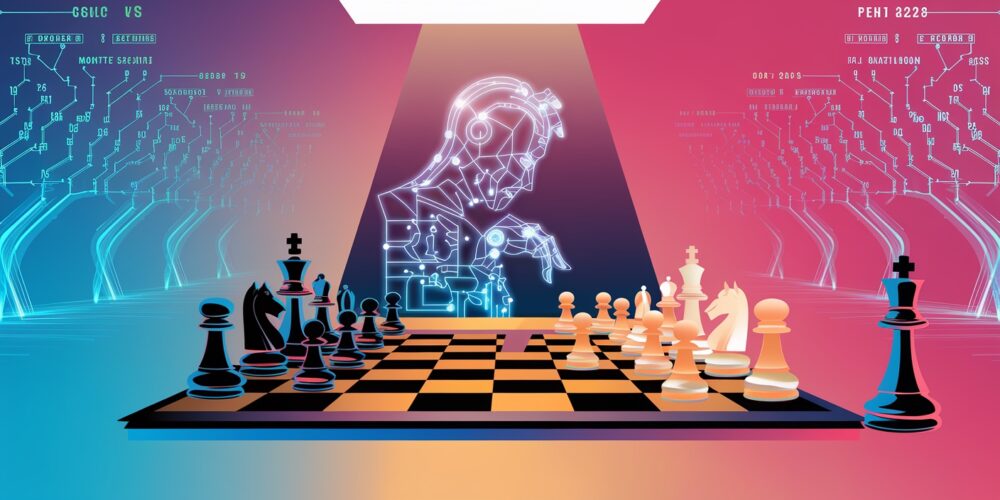It started with a question many of us wrestled with in a school: “If a train leaves a city at 8 a.m., traveling 60 kilometers per hour…” You know the rest. For humans, solving these puzzles often means painstakingly laying out the logic, one step at a time. For AI, however, it’s often a shot in the dark—an answer plucked from its vast dataset without a clear explanation of how it got there.
In a groundbreaking study, researchers propose a method to teach large language models (LLMs) not just to give answers, but to reason like a chess grandmaster. Using a powerful algorithm called Monte Carlo Tree Search (MCTS), these researchers are unlocking an entirely new capability for AI: the ability to show its work, step by meticulous step. It’s a shift as profound as teaching a computer to play chess—and it might change the way we trust AI.
The Puzzle of AI Reasoning
Today’s LLMs, like ChatGPT or Llama, are great at imitation. They generate text, solve problems, and even write poetry with eerie fluency. But ask them to explain their logic, and they falter. Their reasoning isn’t methodical; it’s a patchwork of statistical guesses, sometimes correct but often opaque.
Reasoning, as it turns out, is AI’s kryptonite. While we marvel at what these systems can do, their inability to think step-by-step leaves them vulnerable to errors—and leaves us, the users, questioning their reliability. The researchers behind this study want to fix that by focusing not just on outcomes but on processes.
The MCTS Breakthrough
Monte Carlo Tree Search, or MCTS, is an algorithm most famously used to help computers master board games like Go and chess. At its core, MCTS simulates possible moves, evaluates their outcomes, and builds a “tree” of options. The researchers applied this approach to reasoning tasks, turning problem-solving into a tree of decisions that an AI can explore, refine, and score for correctness.
Here’s how it works:
-
The model breaks a problem into individual steps, like branches on a tree.
-
At each step, it evaluates multiple possible “next moves” using MCTS, assigning scores based on their likelihood of being correct.
-
The best-scoring steps are used to train the model, and the process repeats, iteratively sharpening its reasoning abilities.
The result? Instead of leaping to an answer, the AI builds a logical pathway, step by step.
The researchers tested their method on two challenging datasets: MATH, filled with high school-level math competition problems, and GSM8K, designed for grade-school math. The results were striking:
-
Accuracy on MATH problems jumped from 47% to over 51%—a significant leap in this domain.
-
Performance on GSM8K rose from 80% to nearly 86%, showcasing the method’s effectiveness across varying difficulty levels.
Perhaps most impressive, the models trained with this method showed transferable reasoning skills. A model trained on grade-school problems performed better on high school-level tasks than untrained counterparts. It’s akin to a student excelling in algebra after mastering arithmetic—a sign of true learning.
Why This Matters
1. A Revolution in Trust
AI’s tendency to deliver black-box answers has long been a stumbling block for trust. By making reasoning transparent, this method offers a potential antidote to that opacity.
2. Scaling Expertise Without Humans
Traditionally, improving AI reasoning required human annotations—a labor-intensive and expensive process. By automating this step with MCTS, researchers have made reasoning improvements scalable and accessible.
3. Real-World Impact
Imagine an AI tutor that not only solves problems but teaches students how to solve them. Or a legal assistant that walks through the logic of case law. This approach could redefine AI’s role in education, healthcare, and beyond.
The Challenges Ahead
While the results are promising, the study isn’t without limitations:
-
Quick Convergence: The model’s performance plateaued after a few training iterations, leaving much of the training data unused. Unlocking further improvements will require deeper insights into why this happens.
-
Efficiency Questions: The method relies on fine-tuning using LoRA (Low-Rank Adaptation), which, while resource-efficient, may limit the scale of potential gains.
-
Contextual Reasoning: While the approach improves general reasoning, domain-specific problems—like medical diagnostics or legal analysis—may still require tailored datasets and additional training.
A New Era for AI
This isn’t just a technical upgrade; it’s a philosophical shift. For too long, we’ve treated AI as a prodigy—remarkably gifted but frustratingly incapable of explaining its brilliance. By teaching machines to reason step by step, this study ushers in an era where AI isn’t just solving problems but collaborating with us to solve them.
It’s a vision of AI not as a mysterious oracle but as a transparent, trustworthy partner. And as we hand over increasingly complex decisions to machines, this shift feels less like a luxury and more like a necessity.
The next time you ask an AI for help—whether it’s solving a math problem or mapping a supply chain—imagine it walking you through the solution, pointing out potential pitfalls, and explaining why it chose one path over another. That’s the future this research is building.
The paper: https://arxiv.org/pdf/2501.01478
